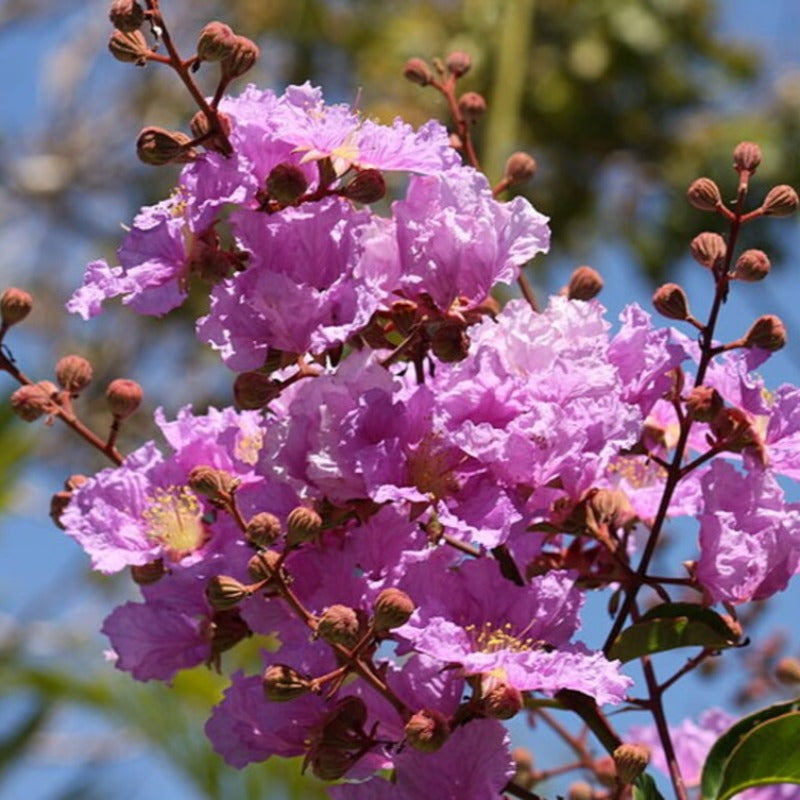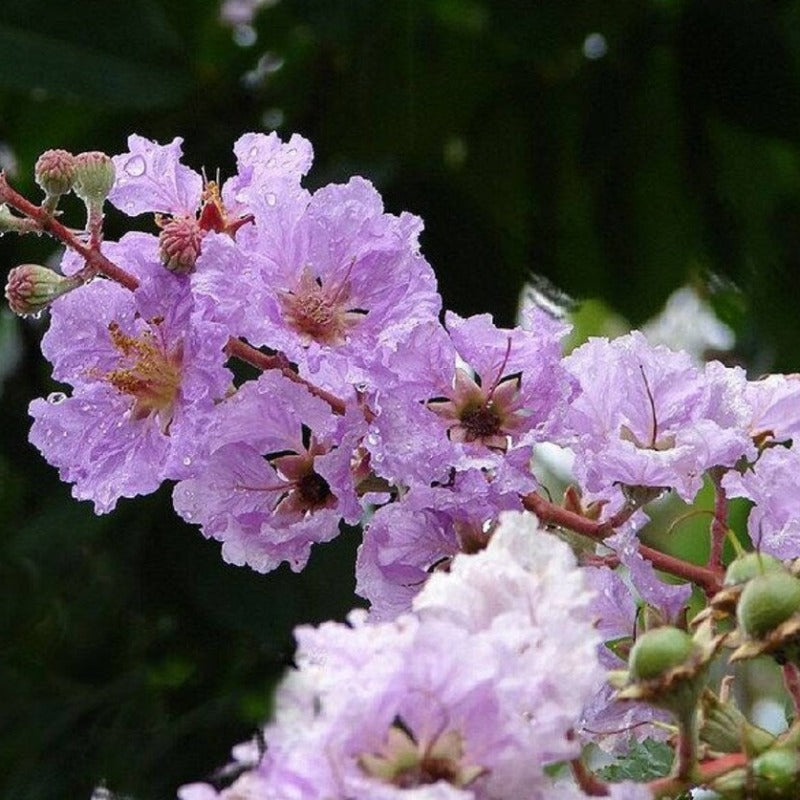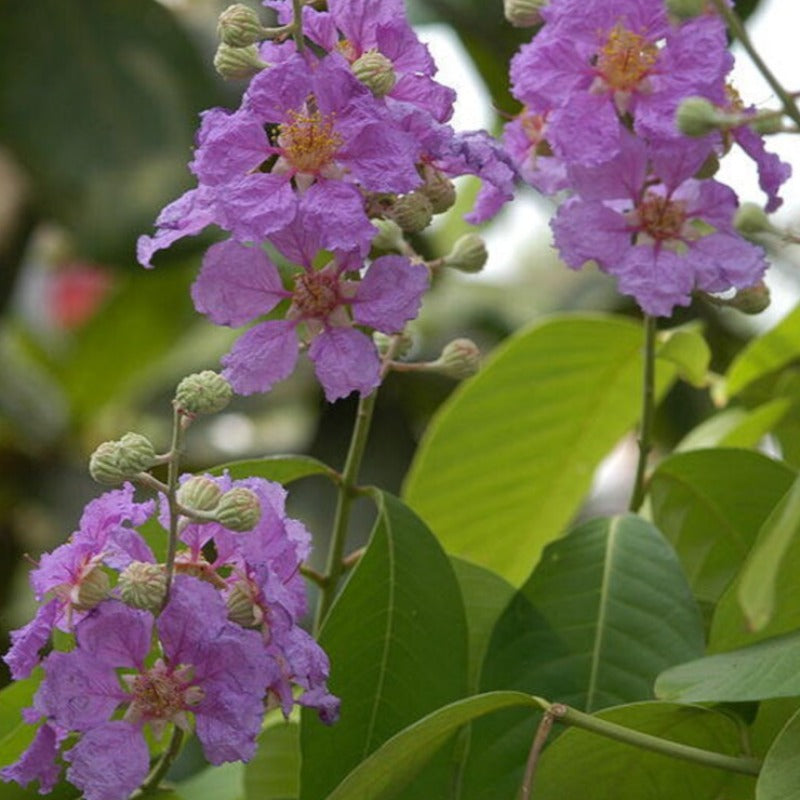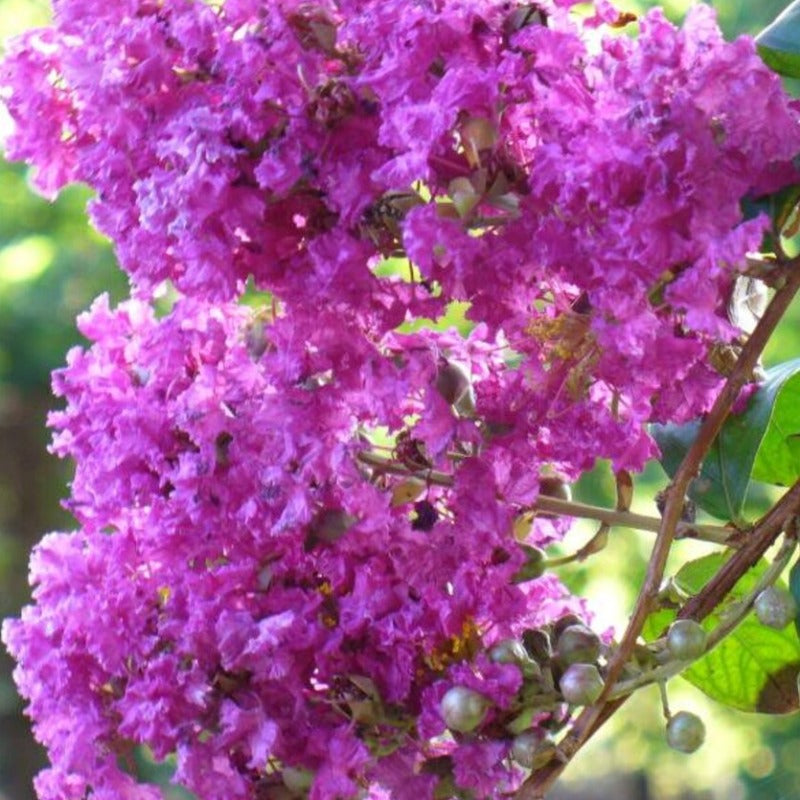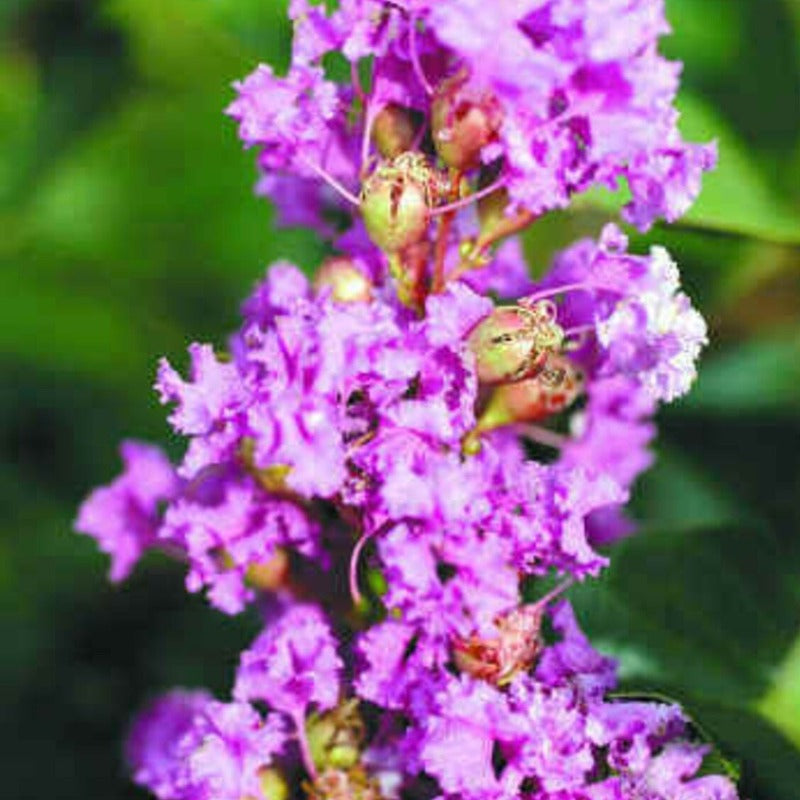- Historical context: Crepe myrtle, known scientifically as Lagerstroemia, is a genus of around 50 species of deciduous and evergreen trees and shrubs. The name 'crepe myrtle' is derived from the crepe-like texture of the flowers and the resemblance to the myrtle plant.
- Geographical origination: Crepe myrtle is native to the Indian subcontinent, Southeast Asia, northern Australia, and parts of Oceania.
- Relevant cultural significance: Crepe myrtle has been cultivated for centuries in Asia, particularly in China and Korea, where it is often associated with beauty and longevity. In the United States, it is a popular ornamental plant in the southern states.
- Time period of discovery: The plant has been known and cultivated for thousands of years, with significant cultivation records dating back to ancient China.
- Original habitat: Crepe myrtle thrives in warm, tropical, and subtropical climates, often found in open woodlands and along riverbanks.
- Notable historical uses: Historically, crepe myrtle has been used primarily for ornamental purposes due to its attractive flowers and bark. In some cultures, it has also been used in traditional medicine.
- Ideal temperature range: Crepe myrtle grows best in temperatures ranging from 70°F to 85°F (21°C to 29°C).
- Soil type: The plant prefers well-drained, slightly acidic to neutral soil with a pH of 5.5 to 7.5.
- Sunlight requirements: Full sun is essential for optimal growth and flowering. The plant requires at least 6 hours of direct sunlight daily.
- Watering needs: Crepe myrtle needs moderate watering. It is drought-tolerant once established but benefits from regular watering during dry periods.
- Planting season: The best time to plant crepe myrtle seeds is in the spring after the last frost or in the fall.
- Germination time: Seeds typically germinate within 2 to 3 weeks under optimal conditions.
- Growth cycle duration: Crepe myrtle can take 3 to 5 years to reach maturity, depending on the variety and growing conditions.
- Common pests and diseases: Common pests include aphids, Japanese beetles, and powdery mildew. Regular monitoring and appropriate treatments can help manage these issues.
- Companion planting advice: Crepe myrtle pairs well with other sun-loving plants like roses, lavender, and ornamental grasses.
- Common challenges and solutions: Challenges include powdery mildew and aphid infestations. Solutions involve proper spacing for air circulation, regular pruning, and using insecticidal soap or neem oil for pest control.
- Nutritional values: Crepe myrtle seeds are not typically consumed, so they do not have notable nutritional values.
- Health benefits: While not commonly used for health purposes, some traditional medicine practices have utilized parts of the plant for their anti-inflammatory and antimicrobial properties.
- Culinary uses: Crepe myrtle is not used in culinary applications.
- Medicinal uses: In traditional medicine, crepe myrtle has been used to treat ailments such as diarrhea and respiratory issues, although scientific evidence supporting these uses is limited.
- Other unique advantages: Crepe myrtle is highly valued for its ornamental beauty, providing vibrant flowers in various colors, attractive bark, and a long blooming season. It is also relatively low-maintenance and drought-tolerant once established.
